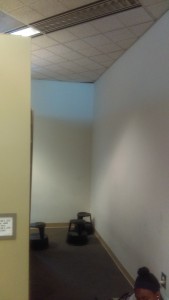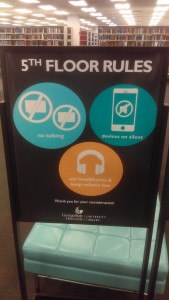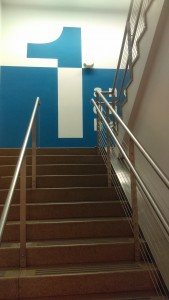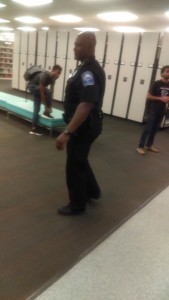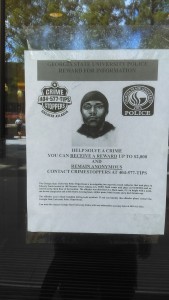
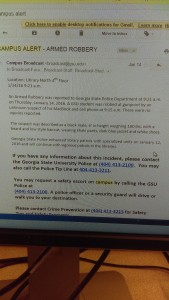
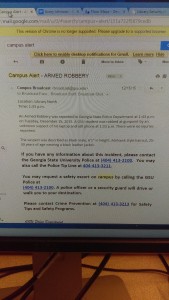

The first crime that was reported happen in the GSU library December 15,2015 at 1:33 p.m. A GSU student was robbed at gunpoint by an unknown suspect of his laptop and cell phone at Library North. While GSU students and staff ,including I, were notified of this, it did not receive much attention of this and was taken for granted without anything much happening. The second crime happened the next month in the library January 14,2016 at 9:15 spawned some buzz of a person being held at gunpoint, this made GSU aware. Finally, On Library North 3rd Floor at 7:41 am and 7:45 am two Armed Robberies were reported to Georgia State Police Department on January 28, 2016. Two GSU students stated they were robbed at gunpoint of their computers. This put GSU at a state of unrest where GSU students, including me, felt unrest at the thought that we could be the next victim. It led to a news report and then abundance of police officers that transformed the library into somewhat of a fortress.
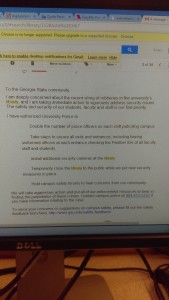
A recent article discusses the purpose of library design “characterized as a legacy structure, inflexible in its primary role as a space for physical materials” while others say “the library space as a center for collaboration, multi-modal learning, discovery, and social and cultural life“. Georgia State University’s Library seems like an environment that encourages learning, happiness, and productive activity. However its design has promotes crime. The University library advertises a “wealth of resources” and suggests people to “take advantage of the services” they offer. While exploring the library in its entirety, one can see that it down to its very structure and design, makes it a hotspot for criminal activity and how it lead to the recent crime events that occurred there.
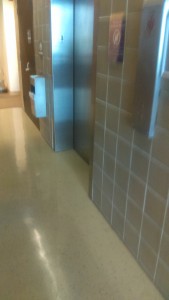
GSU Library website helps to provide information on this. In this website a full map is provided along with each floor layout and directions to the library itself from numerous locations. The maps provides a scaled floor layout with detail including every room number, table placement, and elevator/shelf placement. The website also details in quantity it’s number of visitors, volumes it has, items it gives to other libraries, and more through a series of “quick facts“. This is able to provide numerous advantages to a person should they want to commit a crime, as they are provided intel every way.
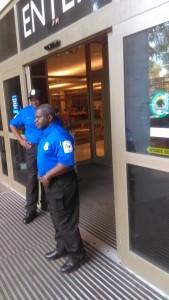
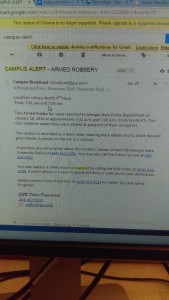
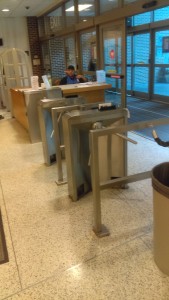
The two entrances and exits consist of one connected through classroom south and one from the plaza. Both of these places (plaza and classroom south) have easy street access where one can easily enter from the outside in. Located at these entrances/exits there are card swipes where one swipes their card in the receiver to grant access. The turnstiles are intended to ” to slow down movements of users and check patrons going out at the exit. It does not require the student’s picture to be shown nor is any of the student’s information received at the security desk, this basically allows anybody with a valid card (stolen or not) to enter the library.

However, with the recent presence of police one is required to show their I.D. These guards however, view each picture in about 2 seconds each, which allows people to “flash” their I.Ds and if the picture is remotely the same one can just enter. I know this from personal experience, since one time I left my wallet in the library, I used my friends I.D and because he kinda looked like me, I was granted access. This is abundance of security is apparently pushing it, as it is not the case in other libraries. There are detectors in the entrances/exits of the library, however these detectors only detect if library books or equipment are leaving. This is largely a design flaw that promoted crimes because the lack of metal detectors in the library.
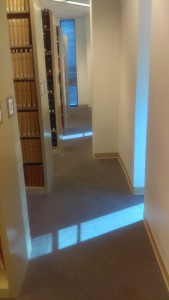 After entering the library one can find many “opportunity areas” in which crimes are committed. The library shelfs are big and tall and create to what I call “dark areas”, narrow dark spaces with a lack of security cameras or no security at all. These places provide opportunity for a person to threaten a person with a gun without being seen or interfered with.
After entering the library one can find many “opportunity areas” in which crimes are committed. The library shelfs are big and tall and create to what I call “dark areas”, narrow dark spaces with a lack of security cameras or no security at all. These places provide opportunity for a person to threaten a person with a gun without being seen or interfered with.
This “dark area” term is also subsequent with the corners of the library on each floor, where few people are usually located and are away from any security in thew library. Two of these very “dark areas” located on the 5th and 3rd floor gave rise to crimes in which students’ laptops were stolen while they were held at gunpoint. Another “opportunity area” and “dark area” is the library elevator. The elevator is an even narrower place with no cameras, and can only hold a few people at a time, guaranteeing a less likely opportunity to get help. In this area a crime also occurred because there were no security cameras and by the time anyone was noticed the assailant was far away.
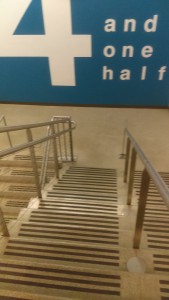
Another design flaw is the location of information and support desks, as they only located on the first/ second floor and are on the complete other side or not even close to these “opportunity/dark areas” which also includes the restrooms as well. The restrooms lack any security, and the walls are designed in a way that blocks any outside sound. In the restrooms there are also designed with stalls that lock from the inside, giving opportunity for someone to lock another inside to prevent outside interference. The stairway remains contains a narrow windowed area where one can engage another without interference.
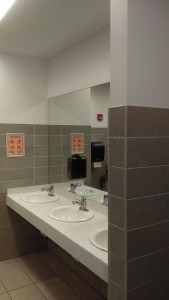
On every floor there are computer tables and desks placed, with shadows dark enough that a person cannot usually see under them. This allows for one to hold someone at gunpoint under the table, committing a crime in broad daylight.
Conclusion: As we study the whole library, including its physical layout, website, along with looking at it in social light, one can see that library’s built design has promoted crime.
Bibs : Ogbonyomi, Andrew Leo. Security and Crime Prevention in Academic Libraries: A Case Study of the Kano State College of Education, Kano, Nigeria. Nebraska: Digital Commons, 1 Jan. 2011. PDF.
Pictures from Me
